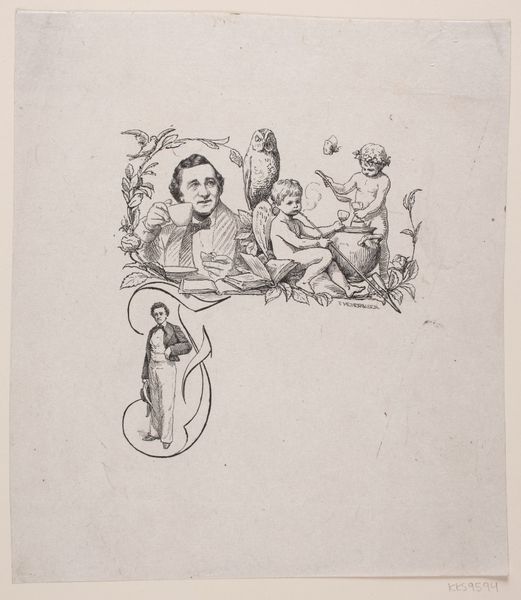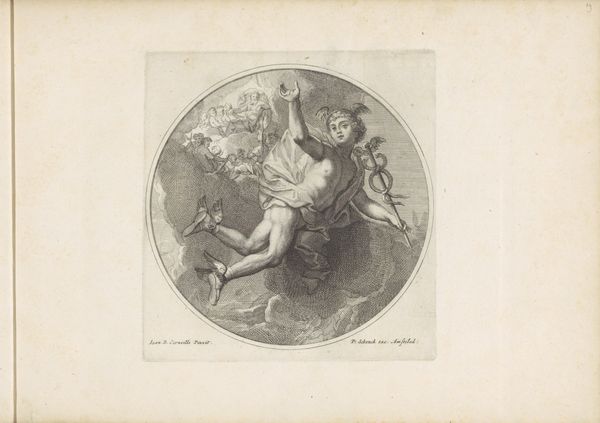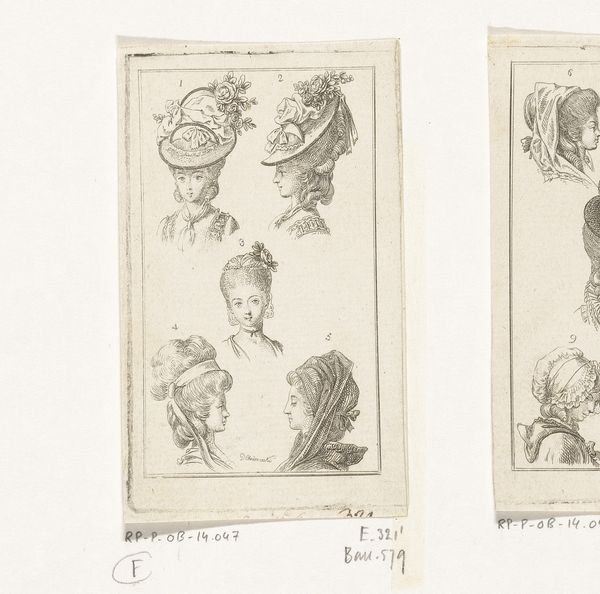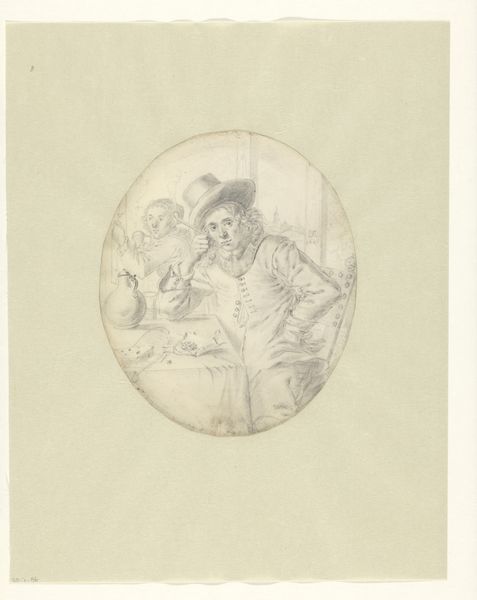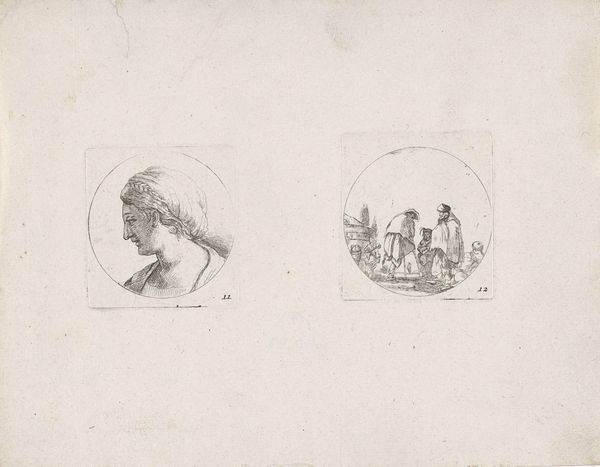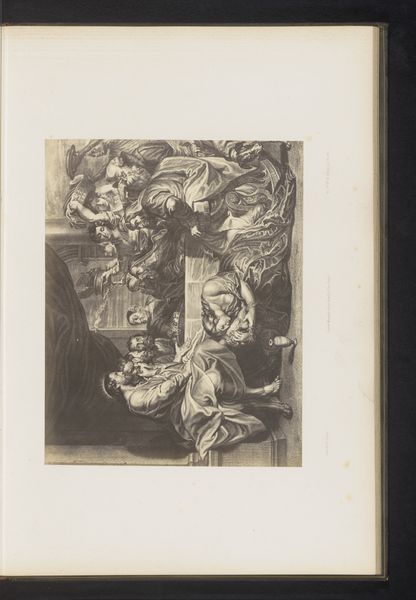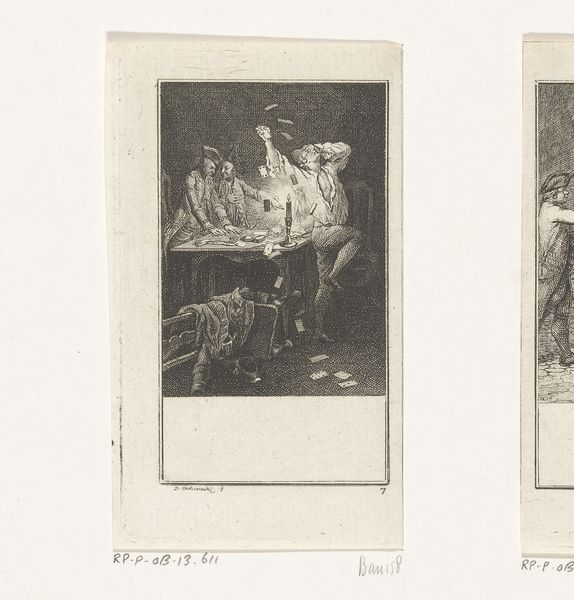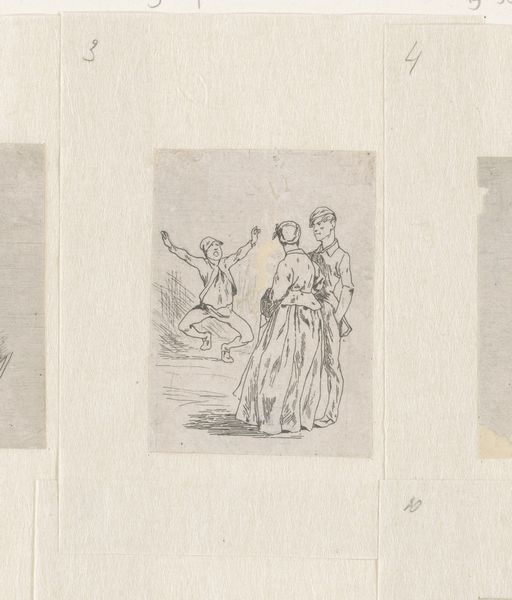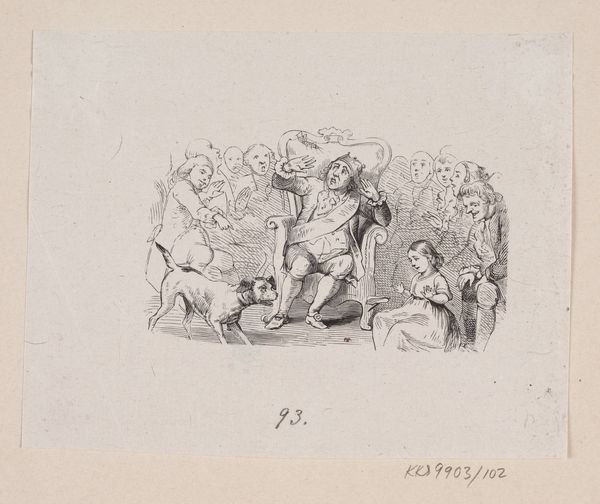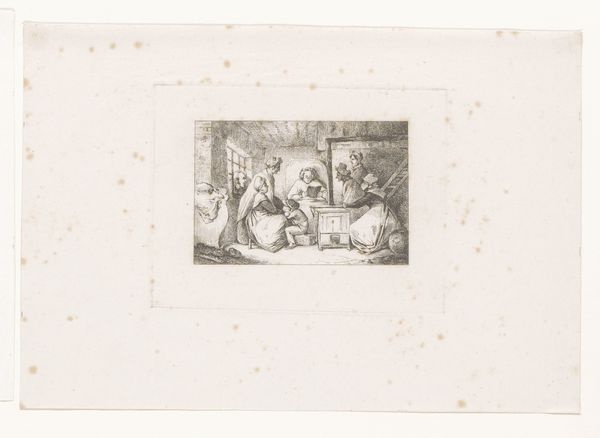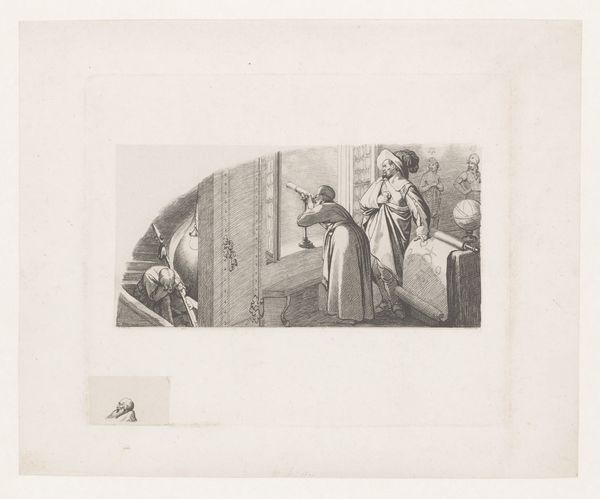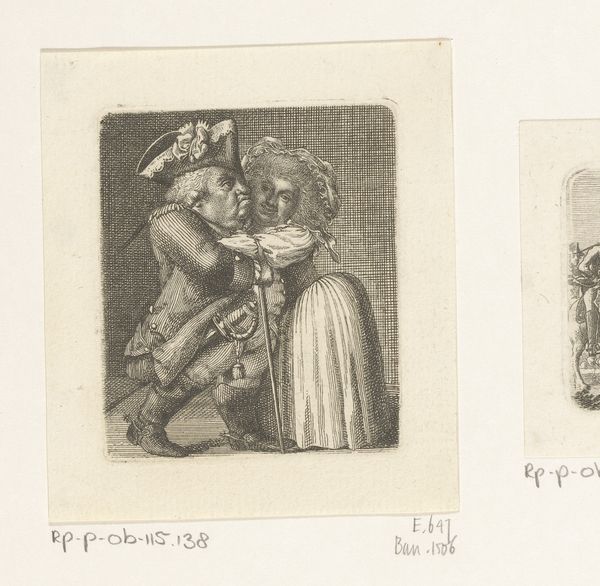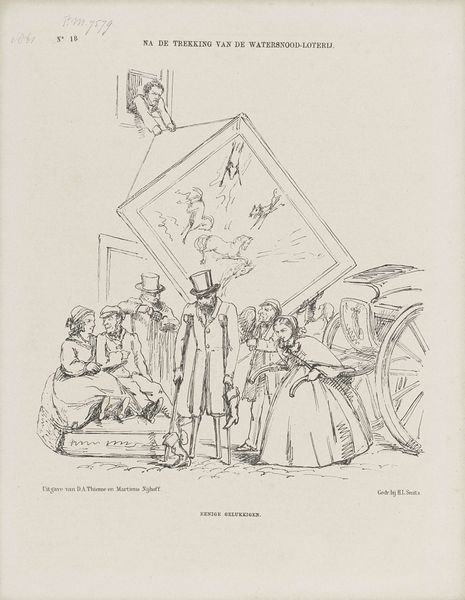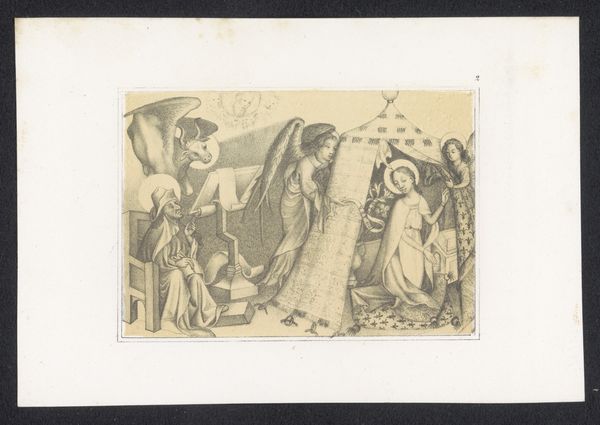
drawing, print, ink, pen
#
portrait
#
drawing
# print
#
pen sketch
#
pencil sketch
#
ink
#
pen
#
genre-painting
Dimensions: 126 mm (height) x 232 mm (width) (bladmaal)
Curator: Ah, I see you've found "Vignet til Sophus Schandorph, 'En Romersk Nat'"—a little gem from the 1870s. It's a drawing, likely done in ink and possibly pen, destined to become a print. Editor: My first thought is, whimsical! The figures framed in circles lend it an almost playful quality, like a vintage playing card. Is it related to wine-making given the presence of an infant drinking from a wineglass? Curator: Exactly! It was intended as an illustration for Sophus Schandorph's work, "En Romersk Nat", which translates to "A Roman Night." We believe the theme leans into a kind of genre painting style depicting scenes from everyday life, albeit touched by classical allusion, or maybe drunken revelry! The figures give away the intent, as there is an infant sat atop a barrel of wine smack-dab in the middle of it! Editor: So, the production involved a draftsperson carefully translating narrative to imagery intended for mass reproduction. How interesting! Did the artist carefully sketch out the drawing beforehand, perhaps with the knowledge that ink drawing could obscure penciled preliminary lines, thus allowing for faster manufacturing later? Curator: The method is intriguing. Pen and ink drawings can seem deceptively simple but mastering those fine lines, the variations in thickness for shading… it's incredibly skilled. Each cross-hatch a carefully considered stroke. Imagine the discipline required! I wonder about the original context - was this for a cheap print run, or a limited edition? Editor: It's tempting to see this as just illustrative work. However, to focus merely on function obscures the degree of skilled labour and material processes embedded in this small-scale vignette. We should also examine Schandorph's work more broadly for hints to its social relevance during its contemporary setting to learn the broader, underlying cultural intent. Curator: You're absolutely right. Seeing this piece now invites consideration of that larger historical tapestry, of consumption, design, labour... which for me loops back to a simpler wonder: this humble design holds complexities galore, not bad for something originally destined to exist as fleetingly as newsprint! Editor: Agreed. Its continued existence allows us to see art's reach extends far beyond the studio and into systems of making, consumption, and enduring visual memory.
Comments
No comments
Be the first to comment and join the conversation on the ultimate creative platform.
